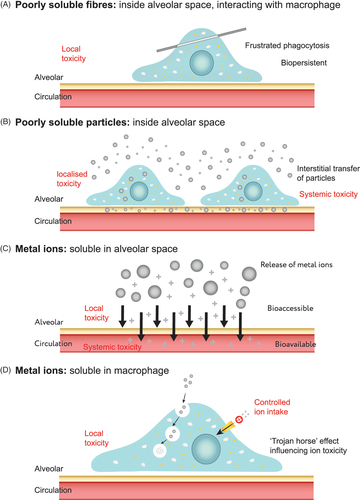Figures & data
Table 1. Composition (g/L) of frequently used biofluids used to simulate the neutral conditions of the lung lining fluid.
Table 2. Composition (g/L) of frequently used biofluids for simulation of the acidic conditions of the lysosome.
Table 3. Correlation of results from in vitro acellular assays with measurements taken in vivo or within cells grown in vitro.
Table 4. Studies comparing “simple” and complex fluids, including an indication of whether the more complex fluid caused less (−), equal (0), or greater (+) dissolution.

![Figure 2. Schematic demonstrating the diversity of simulated biological fluids and the differences in their composition and physiochemical properties. In particular, the alveoli and lysosome have been highlighted indicating the locations and characteristics of the lysosomal fluid, lung lining fluid and interstitial fluid. [adapted with permission from (Plumlee et al. Citation2006)].](/cms/asset/201552d2-74ff-4363-af1d-ef14a0a7ab21/itxc_a_1903386_f0002_c.jpg)

